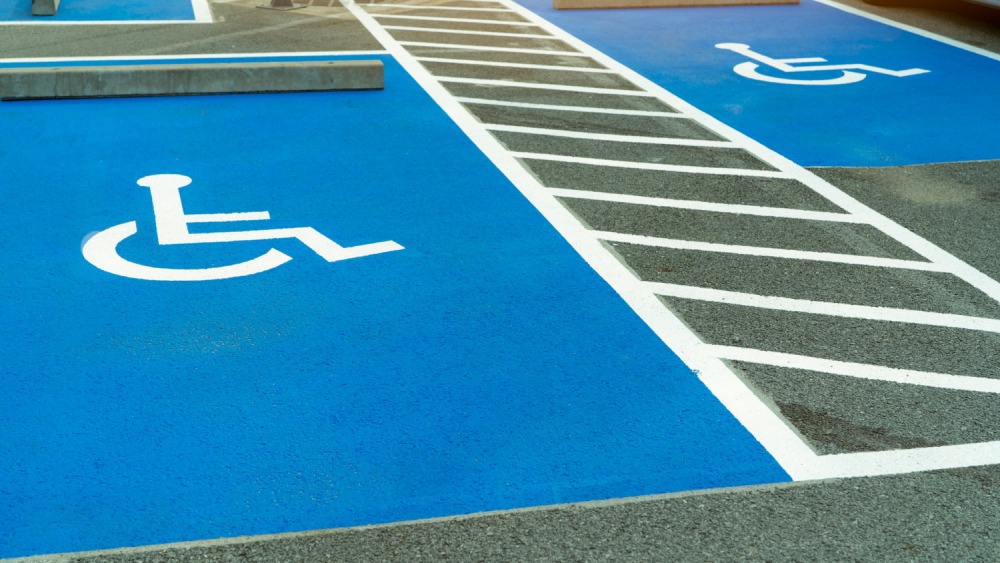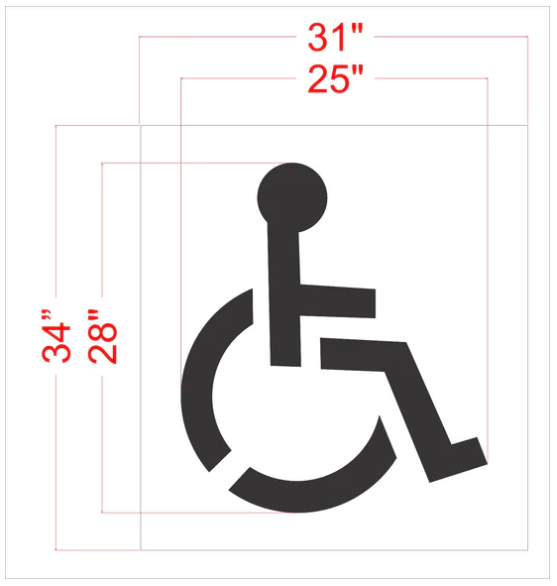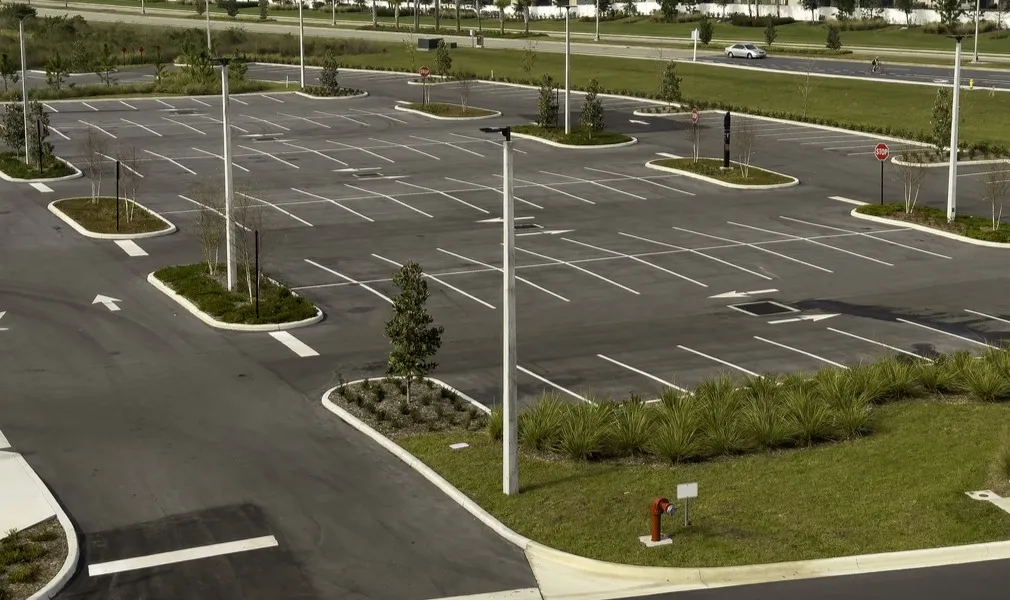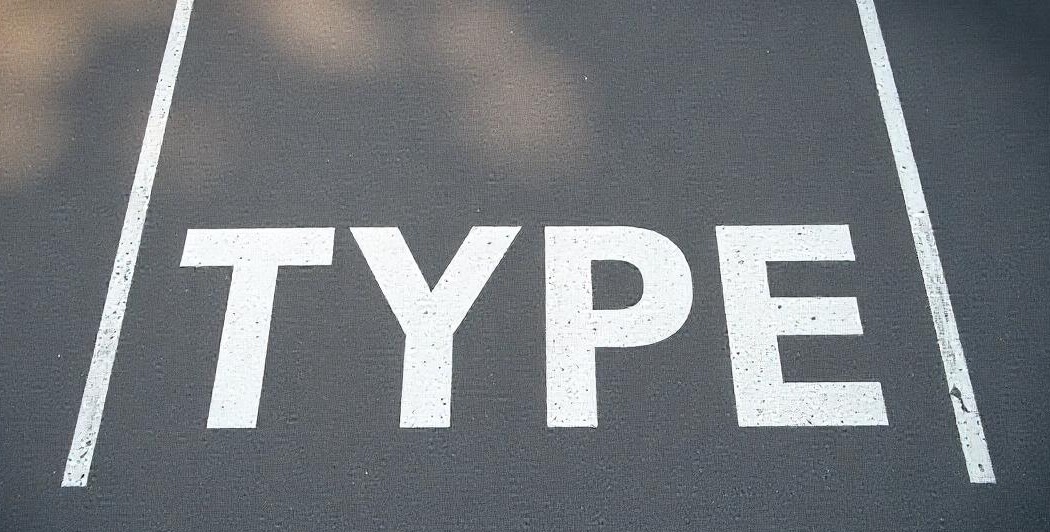The Complete Guide to Handicapped Parking Space Line Marking: Ensuring Accessibility and Compliance

Introduction
Proper line marking for handicapped parking spaces is a critical element of accessible infrastructure. As professionals in the line marking industry, we understand that these markings are not just about meeting legal requirements—they're about ensuring equal access for all members of our community. This guide focuses specifically on the regulations and best practices for handicapped parking space markings in Quebec.
The Importance of Quality Handicapped Space Marking
Properly marked handicapped parking spaces serve multiple purposes:
- Accessibility: They ensure people with mobility challenges can access buildings and services;
- Safety: Wider spaces and access aisles provide room for wheelchairs and mobility equipment;
- Legal compliance: Properly marked spaces meet regulatory requirements and avoid penalties;
- Social inclusion: They demonstrate a commitment to serving all community members;
- Wayfinding: Clear markings help users easily identify available accessible parking.
Regulations for Handicapped Parking Spaces in Quebec
When marking handicapped parking spaces, provincial regulations must be strictly followed:
Dimensions and Layout
The Code de construction du Québec and municipal regulations specify that handicapped parking spaces must have:
- Minimum width of 3.9 meters (compared to standard spaces);
- Access lane of 1.5 meters (which can be shared between two spaces);
- Minimum length of 6.0 meters;
- For minibus accessibility, some spaces must have access aisles of 2.4 meters in width.
The layout of these spaces is equally important—they should be located as close as possible to accessible building entrances, with a barrier-free path to the entrance.

Quantity Requirements
The number of required accessible spaces depends on the total number of spaces in the lot:
- 1-25 total spaces: 1 accessible space;
- 26-50 total spaces: 2 accessible spaces;
- 51-75 total spaces: 3 accessible spaces;
- 76-100 total spaces: 4 accessible spaces;
- 101+ spaces: 1 accessible space per 25 total spaces.
Floor Marking
Floor marking is a crucial aspect of handicapped parking spaces:
- The international symbol of accessibility must be marked on the pavement;
- The symbol should be positioned in the center of the space for maximum visibility;
- According to MTQ standards, the proportions of the symbol must be precisely followed (see figure 2);
- The entire space should be clearly delineated with boundary lines.

Color Standards for Handicapped Parking Markings
When marking handicapped parking spaces in Quebec, color selection plays a crucial role in visibility and compliance:
- Blue background is the designated color for handicapped parking spaces according to MTQ guidelines;
- The international symbol of accessibility should be white on this blue background;
- Unlike standard parking lines which are typically white or yellow, the blue marking creates immediate visual recognition for these reserved spaces;
- In winter conditions when visibility may be reduced, the blue color creates an important contrast with snow and ice.
For line marking professionals, using high-quality blue paint is essential to ensure the color remains vibrant despite weather exposure and traffic wear. When refreshing existing handicapped parking markings, matching the correct shade of blue helps maintain consistency across parking facilities.
This distinctive blue marking works in conjunction with the required P-150-5 vertical signage to create a complete accessibility system that serves both regulatory compliance and practical usability needs.
Strategic Positioning of Handicapped Spaces
The location of handicapped parking spaces is as important as their marking:
- Spaces should be positioned on the shortest accessible route to building entrances;
- The route from the parking space to the entrance must be accessible and barrier-free;
- Spaces should be located on level ground whenever possible;
- Consideration should be given to avoiding areas where pedestrians frequently cross.
Winter Considerations in Quebec
Quebec's harsh winters present unique challenges for handicapped parking space markings:
- Handicapped spaces must remain cleared of snow and ice at all times;
- Access lanes and pathways to building entrances must be maintained year-round;
- Winter maintenance plans should prioritize keeping these spaces clear;
- More frequent refreshing of markings may be necessary due to damage from snow removal equipment.
Signage Working Together with Line Marking
While our primary focus is line marking, proper signage works together with floor markings:
- The P-150-5 sign is mandated by the Code de la sécurité routière;
- Signs must be positioned at a height that remains visible even when snow accumulates;
- Blue background signs are not officially recognized for enforcement purposes;
- Both the marking and signage must be present for legal enforcement of reserved spaces.
Common Compliance Issues to Avoid
When marking handicapped spaces, watch out for these common issues:
- Insufficient width of the parking space or access aisle;
- Improper placement of the accessibility symbol;
- Faded or worn markings that reduce visibility;
- Incorrect blue shade that doesn't provide adequate contrast;
- Spaces located on slopes or uneven surfaces;
- Lack of a clear path from the space to building entrances.
Conclusion
Handicapped parking space line marking is a specialized area that requires knowledge of regulations, appropriate materials, and precise application techniques. Properly marked spaces ensure that people with mobility challenges can access services with dignity and independence.
Professional line marking services understand the nuances of accessibility requirements and can ensure your parking facilities are fully compliant while providing the durability needed for Quebec's challenging climate. Remember that these markings are more than just paint on pavement—they're an essential component of an inclusive society.
Titan Parking: Your Partner in Compliance and Accessibility
At Titan Parking, we understand that accessibility is not just a legal requirement — it's a commitment to your community. We support you with:
- Designing your accessible spaces;
- Selecting paints suited to Quebec's climate;
- Ensuring compliance with municipal regulations;
- Annual refreshing of your markings.
Our goal: to ensure every space is safe, visible, and functional — year-round, through summer and winter alike.
For any questions or to request a free quote for your parking lot, contact the Titan Parking team today.





